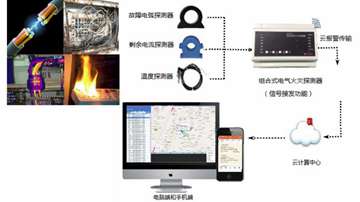Linux自动创建设备节点 2
Linux自动创建设备节点
分类: LINUX
在驱动用加入对udev的支持主要做的就是:在驱动初始化的代码里调用class_create(...)为该设备创建一个class,再为每个设备调用device_create(...)( 在2.6较早的内核中用class_device_create)创建对应的设备。
内核中定义的struct class结构体,顾名思义,一个struct class结构体类型变量对应一个类,内核同时提供了class_create(…)函数,可以用它来创建一个类,这个类存放于sysfs下面,一旦创建好了这个类,再调用 device_create(…)函数来在/dev目录下创建相应的设备节点。这样,加载模块的时候,用户空间中的udev会自动响应 device_create(…)函数,去/sysfs下寻找对应的类从而创建设备节点。
struct class定义在头文件include/linux/device.h中class_create(…)在/drivers/base/class.c中实现device_create(…)函数在/drivers/base/core.c中实现class_destroy(...),device_destroy(...)也在/drivers/base/core.c中实现调用过程类似如下:
static struct class *spidev_class;
/*-------------------------------------------------------------------------*/
static int spidev_probe(struct spi_device *spi)
{
....
dev = device_create(spidev_class, &spi->dev, spidev->devt,
spidev, "spidev%d.%d",
spi->master->bus_num, spi->chip_select);
...
}
static int spidev_remove(struct spi_device *spi)
{
......
device_destroy(spidev_class, spidev->devt);
.....
return 0;
}
static struct spi_driver spidev_spi = {
.driver = {
.name = "spidev",
.owner = THIS_MODULE,
},
.probe = spidev_probe,
.remove = __devexit_p(spidev_remove),
};
/*-------------------------------------------------------------------------*/
static int __init spidev_init(void)
{
....
spidev_class = class_create(THIS_MODULE, "spidev");
if (IS_ERR(spidev_class)) {
unregister_chrdev(SPIDEV_MAJOR, spidev_spi.driver.name);
return PTR_ERR(spidev_class);
}
....
}
module_init(spidev_init);
static void __exit spidev_exit(void)
{
......
class_destroy(spidev_class);
......
}
module_exit(spidev_exit);
MODULE_DESCRIPTION("User mode SPI device interface");
MODULE_LICENSE("GPL");
下面以一个简单字符设备驱动来展示如何使用这几个函数
#include
#include
#include
#include
#include
#include
int HELLO_MAJOR = 0;
int HELLO_MINOR = 0;
int NUMBER_OF_DEVICES = 2;
struct class *my_class;
struct cdev cdev;
dev_t devno;
struct file_operations hello_fops = {
.owner = THIS_MODULE
};
static int __init hello_init (void)
{
int result;
devno = MKDEV(HELLO_MAJOR, HELLO_MINOR);
if (HELLO_MAJOR)
result = register_chrdev_region(devno, 2, "memdev");
else
{
result = alloc_chrdev_region(&devno, 0, 2, "memdev");
HELLO_MAJOR = MAJOR(devno);
}
printk("MAJOR IS %dn",HELLO_MAJOR);
my_class = class_create(THIS_MODULE,"hello_char_class"); //类名为hello_char_class
if(IS_ERR(my_class))
{
printk("Err: failed in creating class.n");
return -1;
}
device_create(my_class,NULL,devno,NULL,"memdev"); //设备名为memdev
if (result<0)
{
printk (KERN_WARNING "hello: can't get major number %dn", HELLO_MAJOR);
return result;
}
cdev_init(&cdev, &hello_fops);
cdev.owner = THIS_MODULE;
cdev_add(&cdev, devno, NUMBER_OF_DEVICES);
printk (KERN_INFO "Character driver Registeredn");
return 0;
}
static void __exit hello_exit (void)
{
cdev_del (&cdev);
device_destroy(my_class, devno); //delete device node under /dev//必须先删除设备,再删除class类
class_destroy(my_class); //delete class created by us
unregister_chrdev_region (devno,NUMBER_OF_DEVICES);
printk (KERN_INFO "char driver cleaned upn");
}
module_init (hello_init);
module_exit (hello_exit);
MODULE_LICENSE ("GPL");
这样,模块加载后,就能在/dev目录下找到memdev这个设备节点了。
例2:内核中的drivers/i2c/i2c-dev.c
在i2cdev_attach_adapter中调用device_create(i2c_dev_class, &adap->dev,
MKDEV(I2C_MAJOR, adap->nr), NULL,
"i2c-%d", adap->nr);
这样在dev目录就产生i2c-0 或i2c-1节点
接下来就是udev应用,udev是应用层的东西,udev需要内核sysfs和tmpfa的支持,sysfs为udev提供设备入口和uevent通道,tmpfs为udev设备文件提供存放空间
udev的源码可以在去相关网站下载,然后就是对其在运行环境下的移植,指定交叉编译环境,修改Makefile下的CROSS_COMPILE,如为mipsel-linux-,DESTDIR=xxx,或直接make CROSS_COMPILE=mipsel-linux-,DESTDIR=xxx 并install把主要生成的udevd、udevstart拷贝rootfs下的/sbin/目录内,udev的配置文件udev.conf和rules.d下的rules文件拷贝到rootfs下的/etc/目录内,并在rootfs/etc/init.d/rcS中添加以下几行:
echo “Starting udevd...”
/sbin/udevd --daemon
/sbin/udevstart
(原rcS内容如下:
# mount filesystems
/bin/mount -t proc /proc /proc
/bin/mount -t sysfs sysfs /sys
/bin/mount -t tmpfs tmpfs /dev
# create necessary devices
/bin/mknod /dev/null c 1 3
/bin/mkdir /dev/pts
/bin/mount -t devpts devpts /dev/pts
/bin/mknod /dev/audio c 14 4
/bin/mknod /dev/ts c 10 16
)
这样当系统启动后,udevd和udevstart就会解析配置文件,并自动在/dev下创建设备节点文件


















